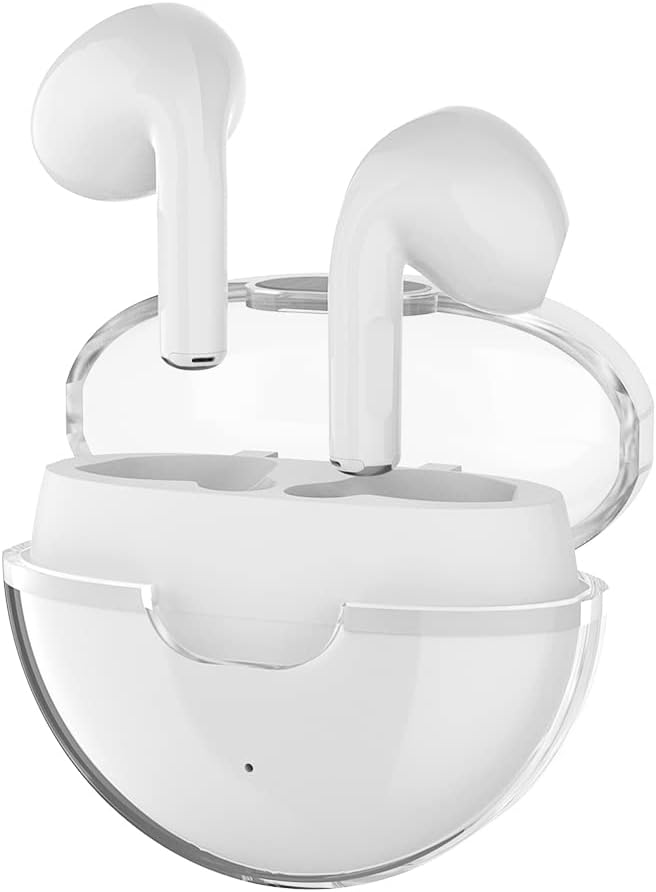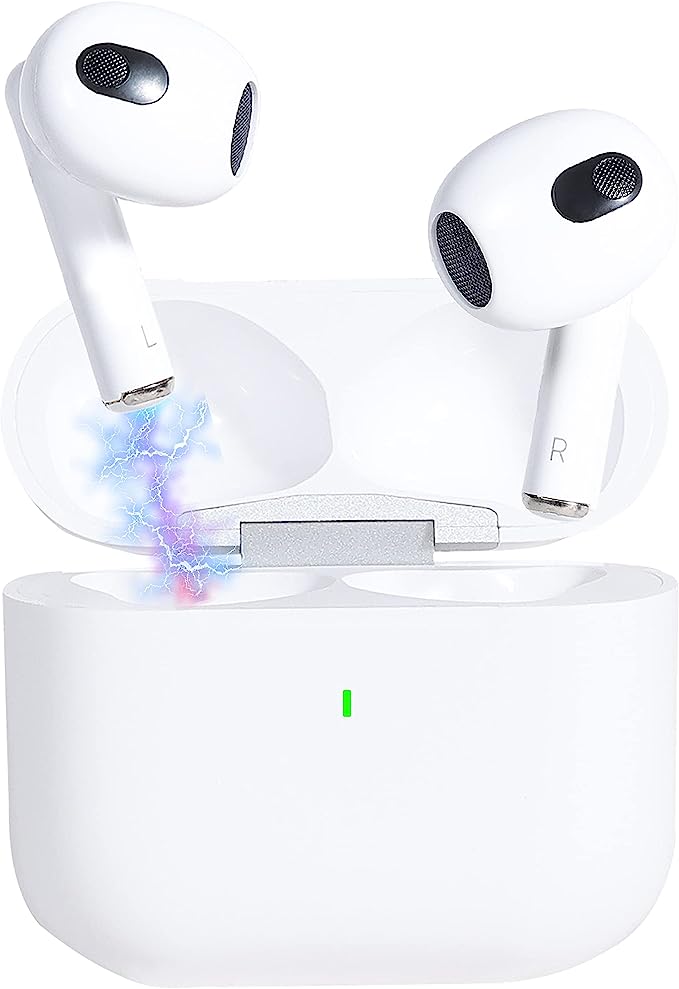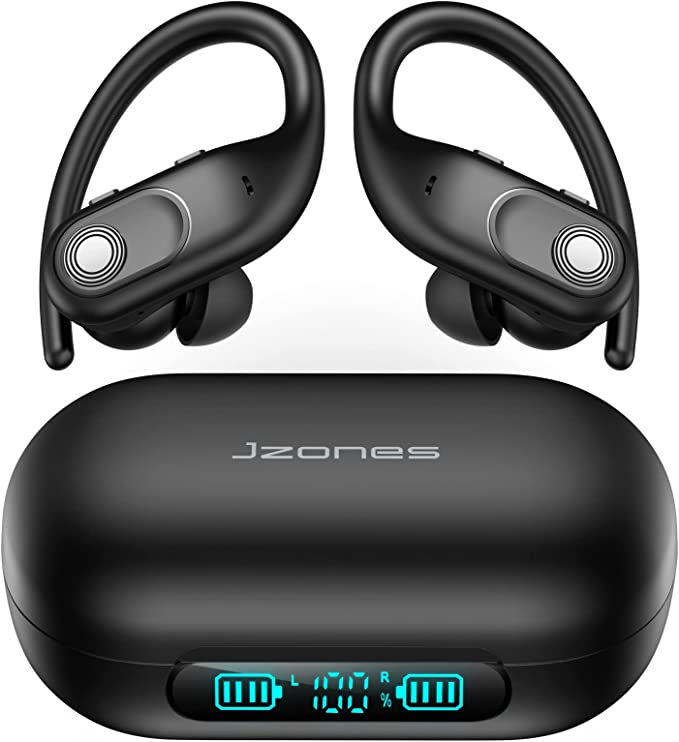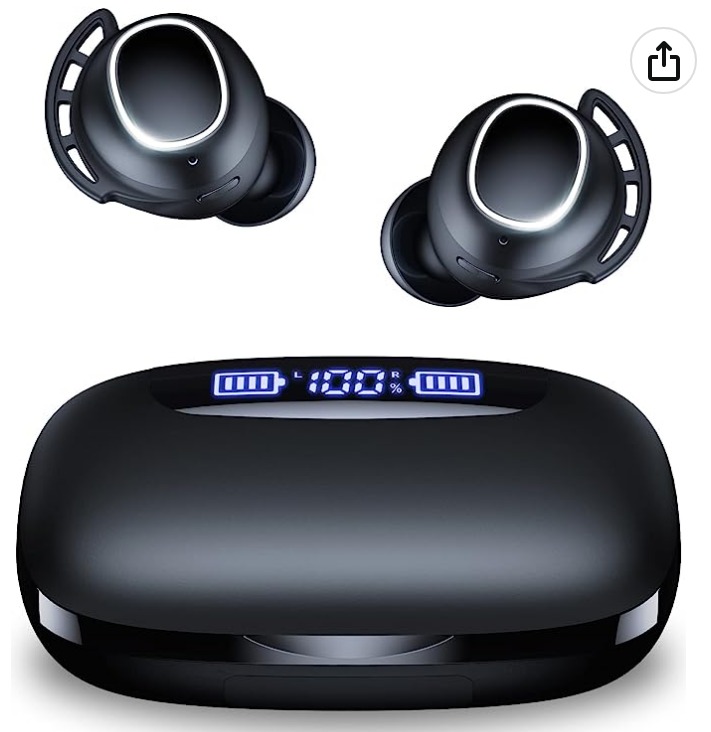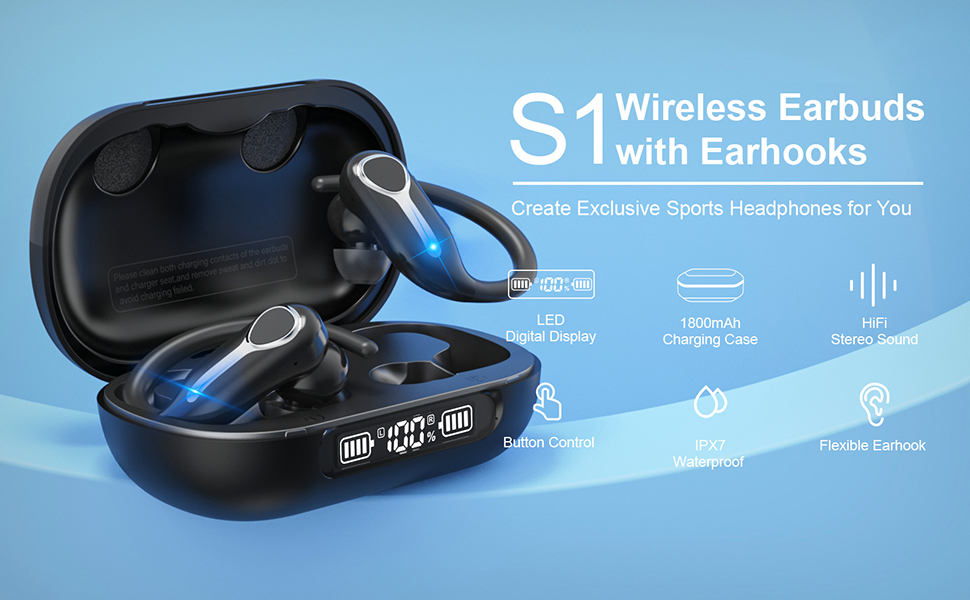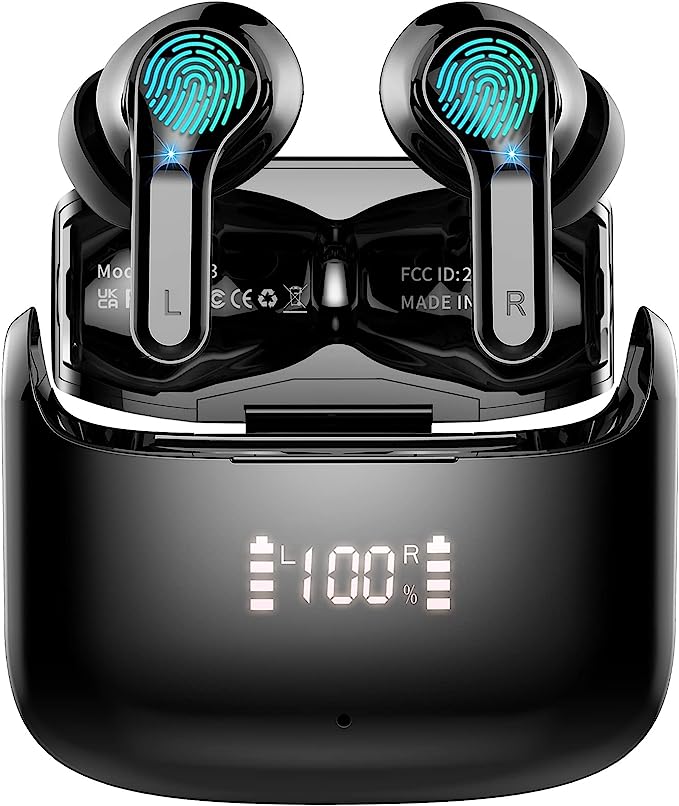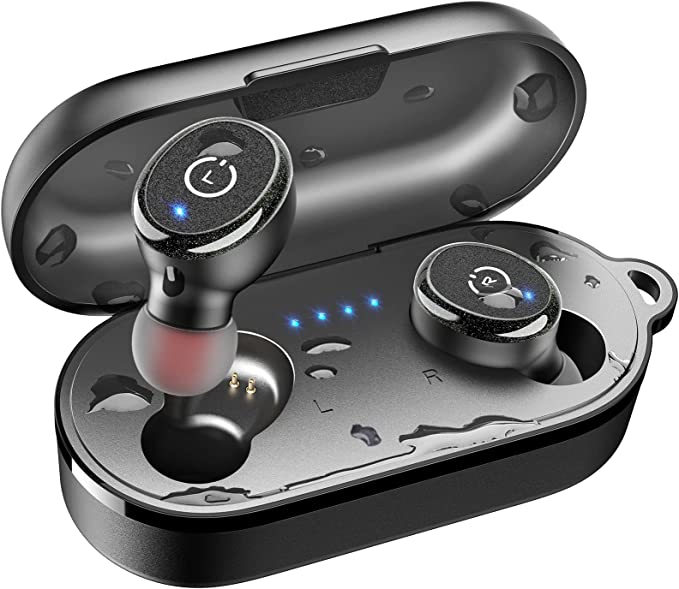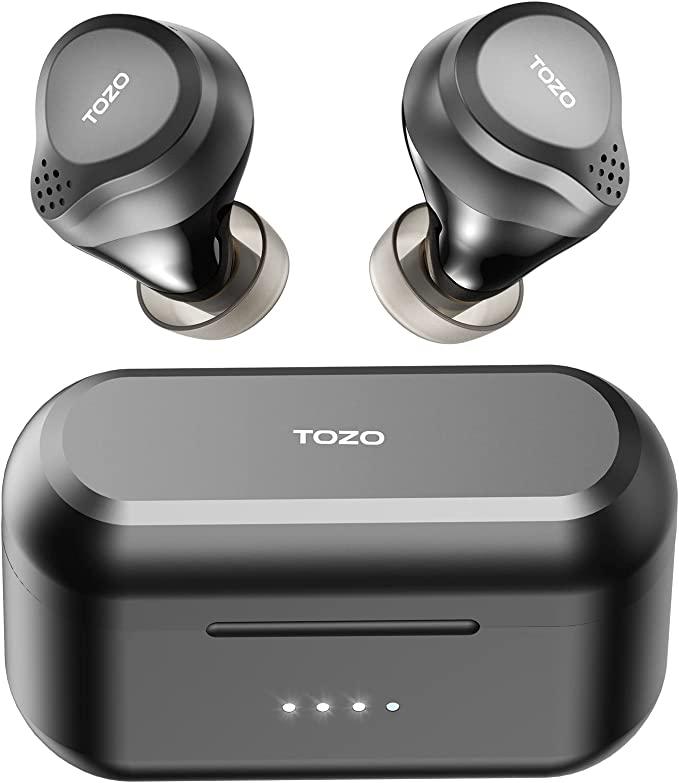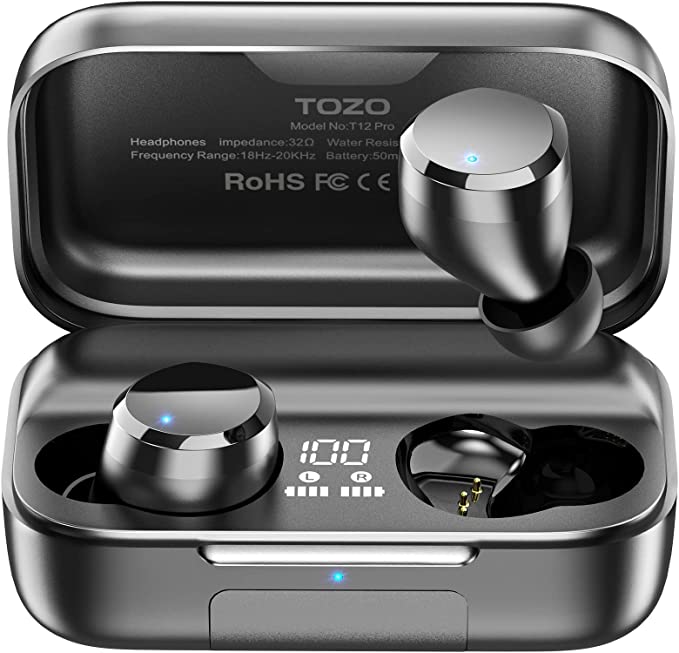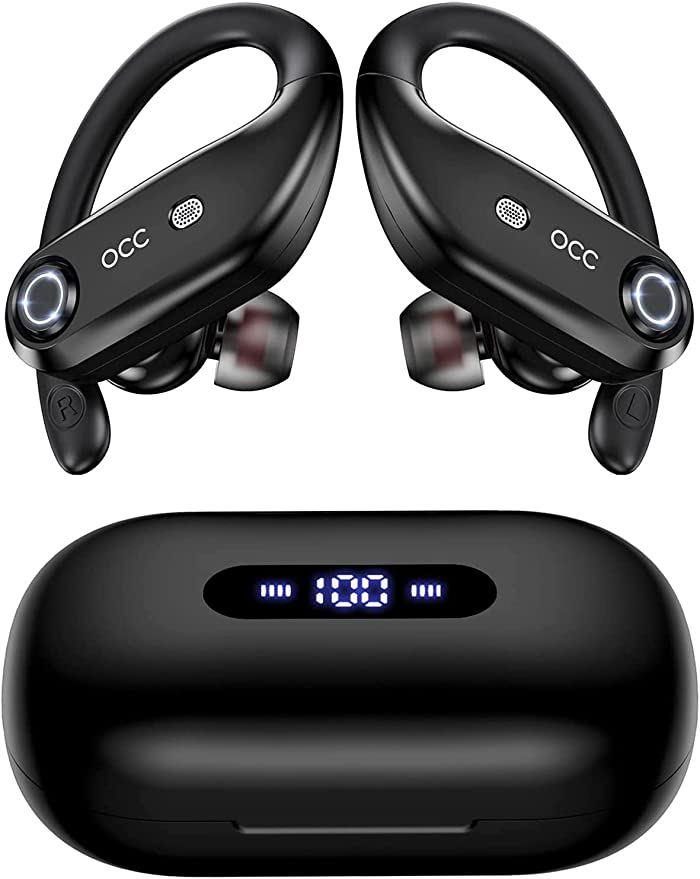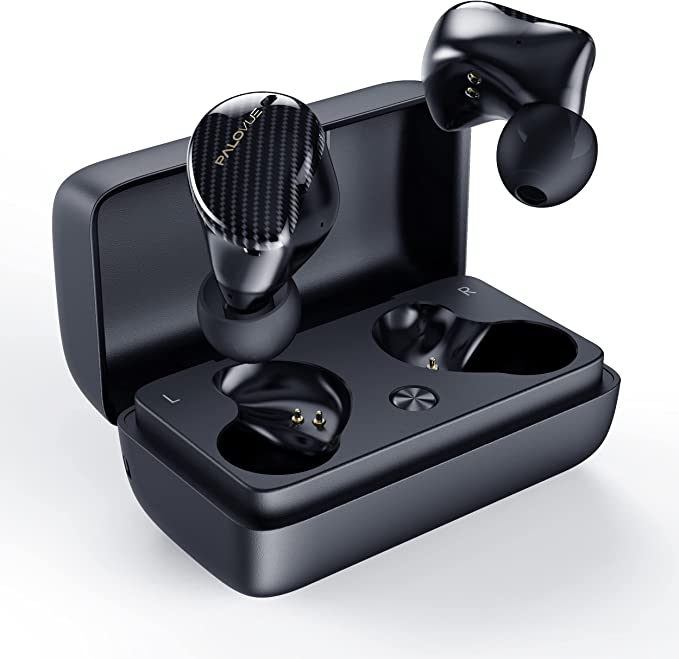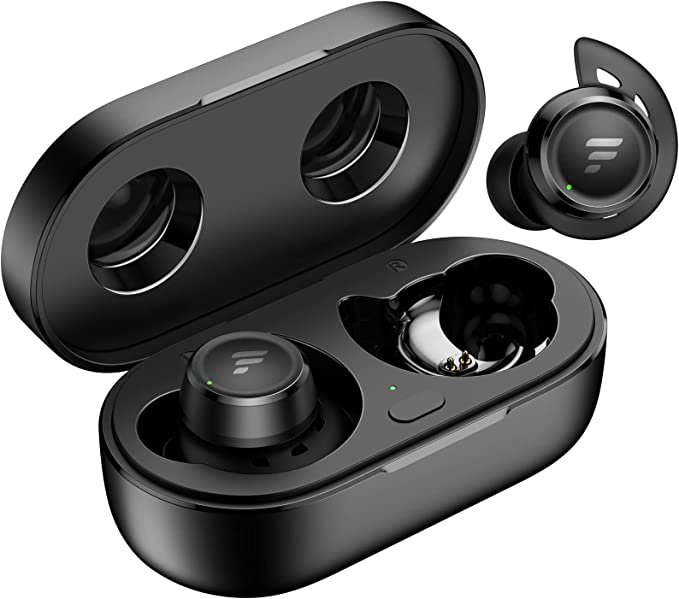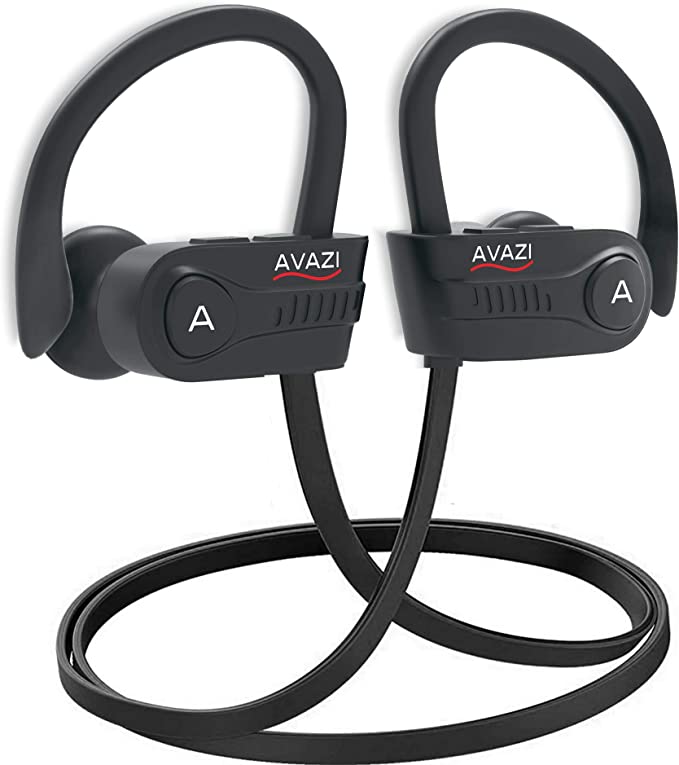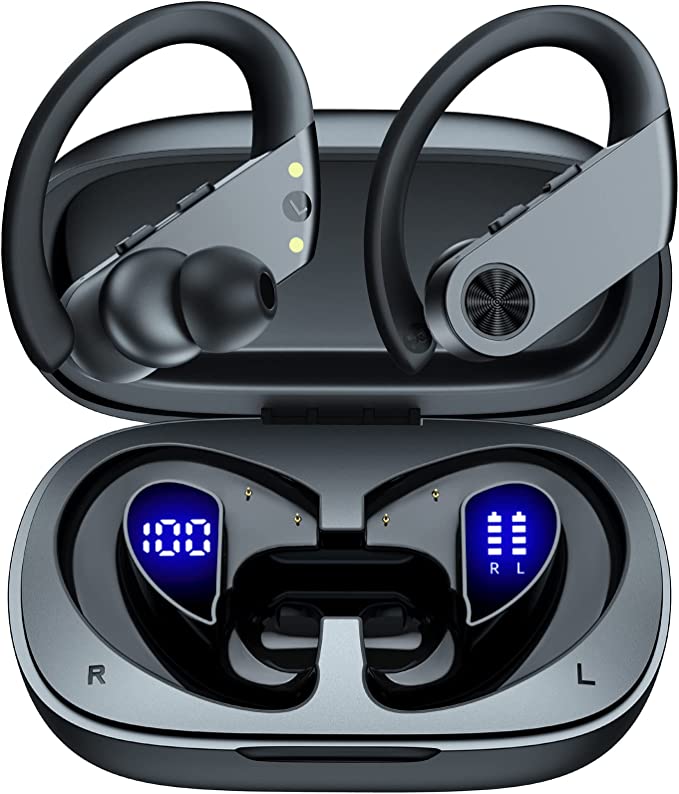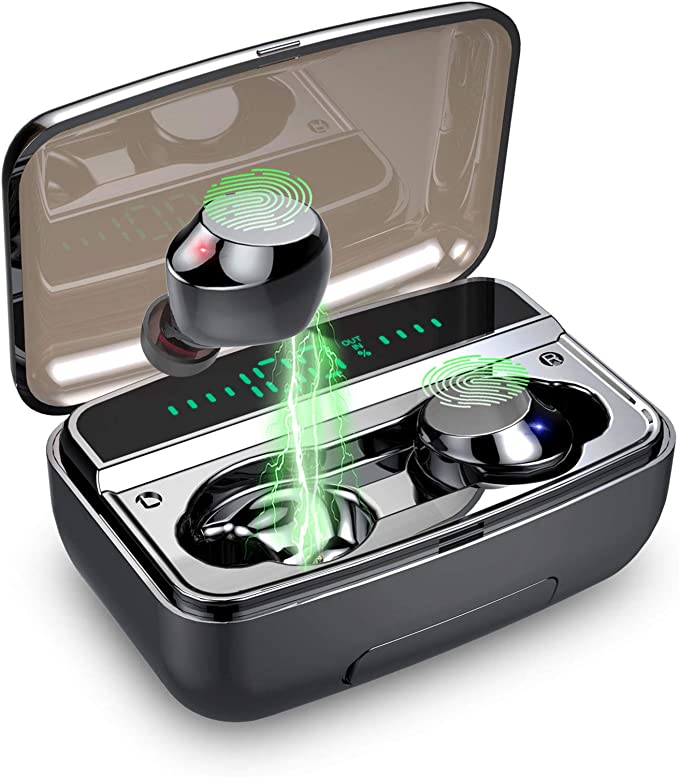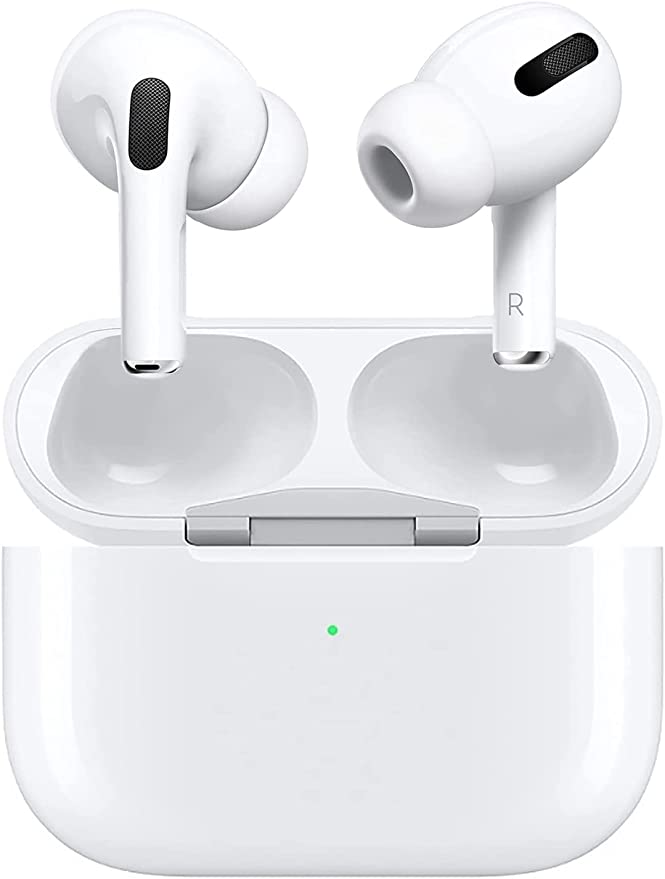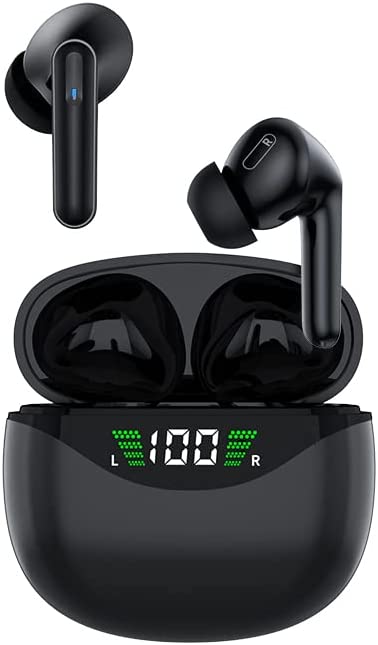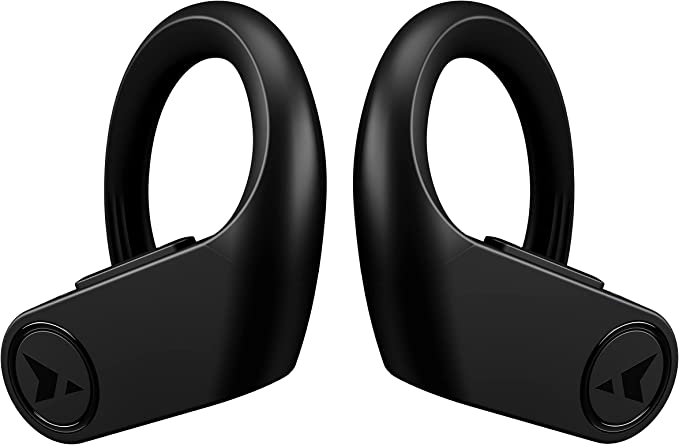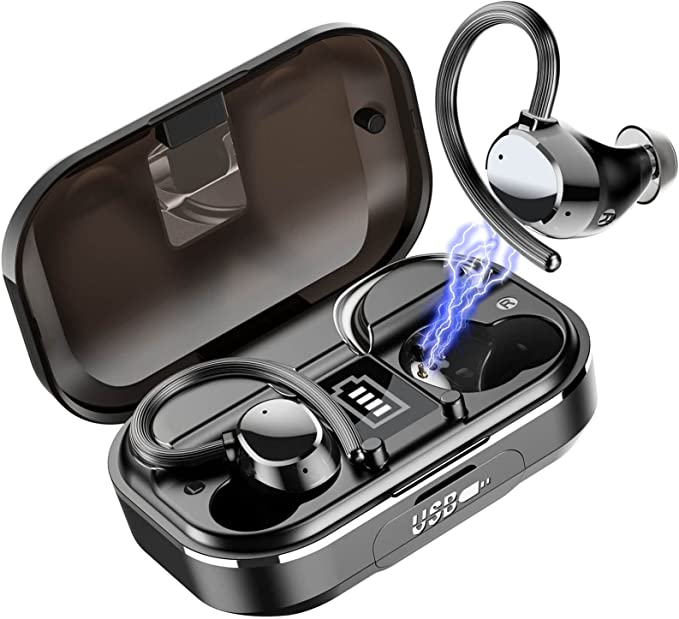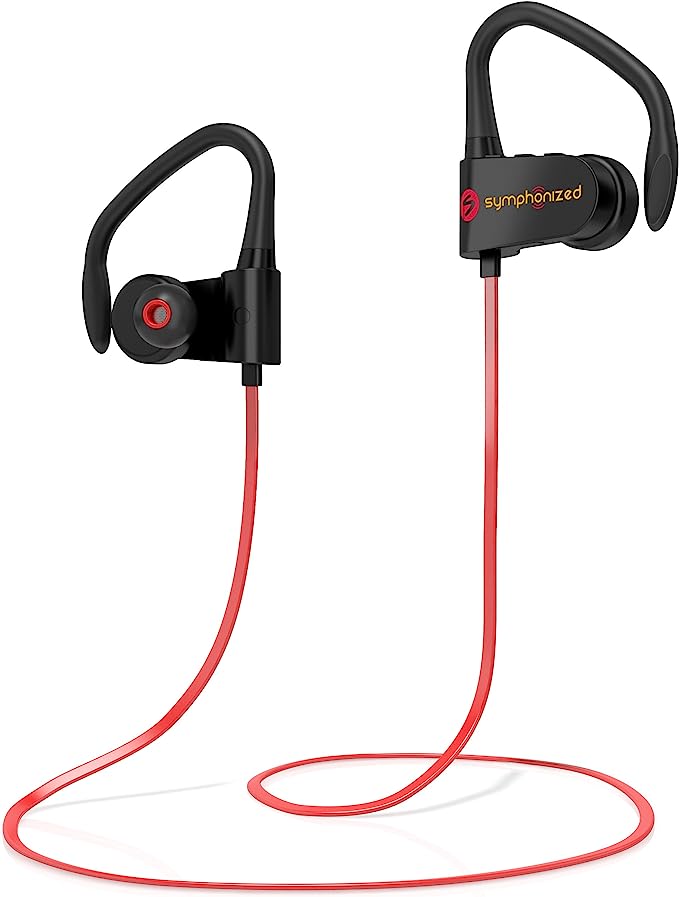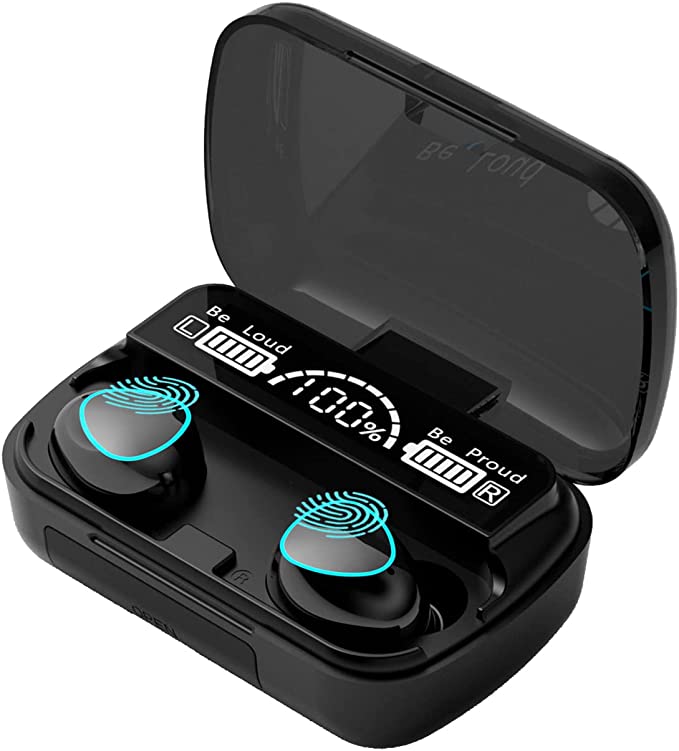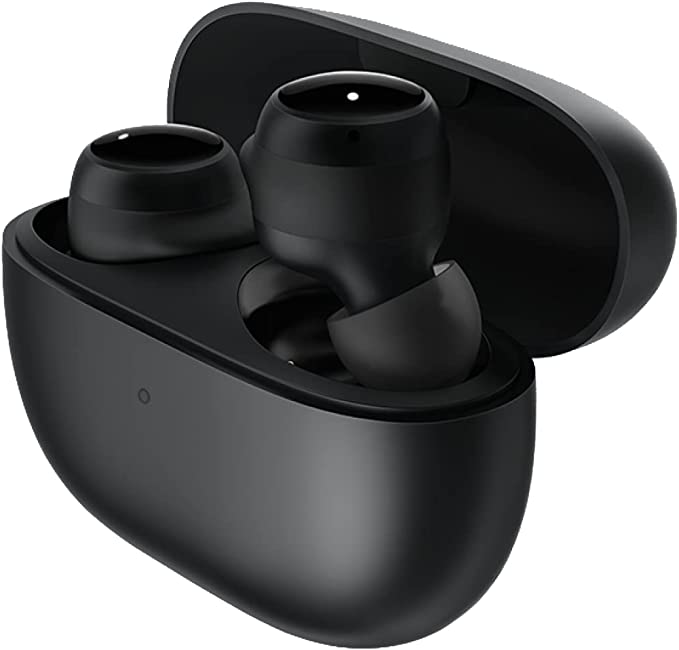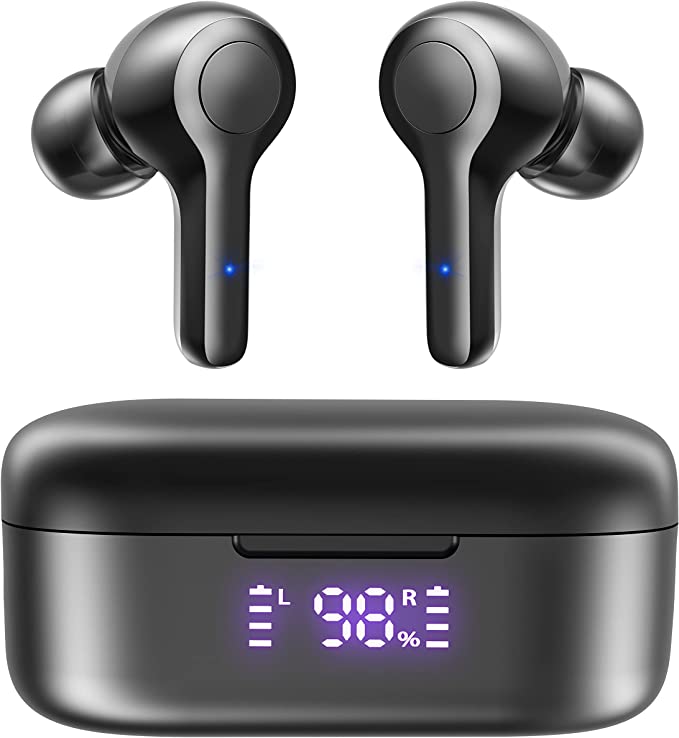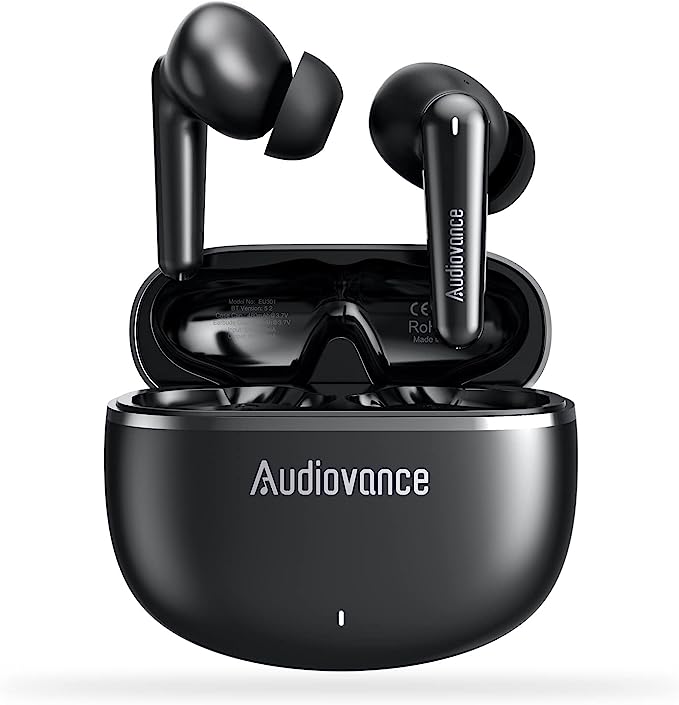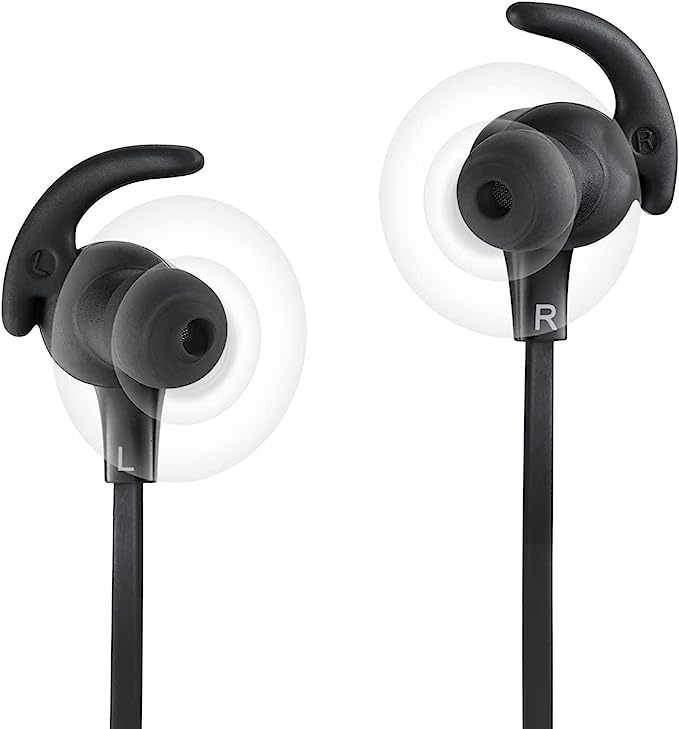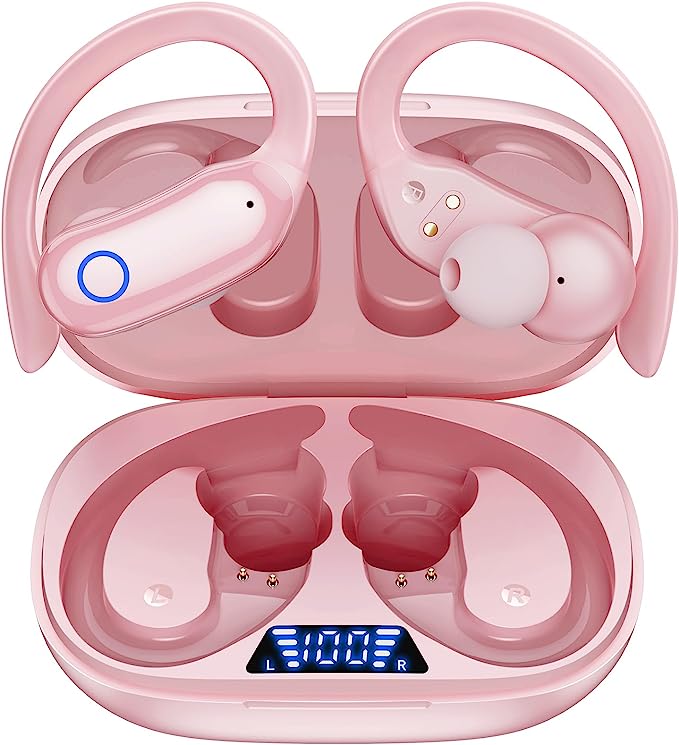PocBuds X1 Wireless Earbuds: Immersive Sound and Ultimate Freedom
Update on March 20, 2025, 1:28 p.m.
Headphones have come a long way. From the bulky, wired contraptions of the past to the sleek, wireless earbuds of today, the evolution of personal audio has been remarkable. For decades, we tolerated the tangled mess of wired headphones, accepting it as a necessary evil. But those days are fading fast, thanks to the rise of Bluetooth technology. The constant battle with knotted cords, the snagging on doorknobs, the restricted movement – all these frustrations are becoming relics of a bygone era. Wireless earbuds offer a level of freedom and convenience that wired headphones simply can’t match.

Decoding Bluetooth: More Than Just Wireless
So, what exactly is Bluetooth? In simple terms, it’s a short-range wireless communication technology that allows devices to connect and exchange data without cables. It uses radio waves in the 2.4 GHz ISM band, a frequency range reserved internationally for industrial, scientific, and medical devices. Think of it as an invisible, short-range radio link between your phone and your earbuds.
The story of Bluetooth is one of continuous improvement. From its early days (version 1.0) with slow data transfer rates and unreliable connections, Bluetooth has evolved significantly. Each new version brought enhancements in speed, range, power efficiency, and security. Today, we’re at Bluetooth 5.3, the latest and greatest iteration.
Bluetooth 5.3 offers several key advantages. Compared to previous versions, it boasts:
- Enhanced Connection Stability: Bluetooth 5.3 uses connection subrating, allowing for faster and more reliable switching between low and high duty cycles. This minimizes interference and dropouts, especially in crowded environments with many wireless devices.
- Improved Power Efficiency: Lower energy consumption means longer battery life for your earbuds and your phone. Bluetooth 5.3 achieves this through features like connection subrating and enhanced connection control.
- Faster Data Transfer: While audio streaming doesn’t require massive bandwidth, faster data transfer speeds contribute to quicker pairing and improved overall responsiveness.
- Enhanced Security: Continuous improvements in encryption and security protocols help protect your data.
But what about the sound? Bluetooth transmits audio digitally, and to do that efficiently, it needs to compress the data. This is where codecs come in. A codec is essentially a set of rules for encoding and decoding audio data. Some common Bluetooth codecs include:
- SBC (Subband Coding): The mandatory, default codec for all Bluetooth devices. It’s decent, but not the best in terms of audio quality.
- AAC (Advanced Audio Coding): Widely supported by Apple devices, AAC generally offers better sound quality than SBC at similar bitrates.
While the PocBuds X1 specifications don’t explicitly state which codec they use, given their focus on value, they likely utilize SBC or AAC. Higher-end codecs like aptX and LDAC, which offer even better audio quality, are typically found in more expensive headphones.

Water Worries? Understanding IPX Ratings
If you’re an active person, you’ll want earbuds that can withstand sweat and the occasional splash of rain. This is where IPX ratings come into play. IPX stands for “Ingress Protection,” and the number following it indicates the level of protection against solids (like dust) and liquids.
The PocBuds X1 have an IPX5 rating. Let’s break that down:
- IPX: This signifies that the rating pertains to water resistance.
- 5: This number indicates the level of protection. An IPX5 rating means the earbuds are protected against water jets from any direction. Think of it as being able to withstand a sustained spray of water, like from a showerhead or a heavy rain.
It’s important to note that IPX5 doesn’t mean the earbuds are fully waterproof. You shouldn’t submerge them in water (like when swimming). But for workouts, running in the rain, or accidental splashes, they’ll hold up just fine.
The Science of Sound: How Earbuds Create Audio
At its core, sound is simply vibration. When an object vibrates, it creates pressure waves in the surrounding air. These waves travel to our ears, where they’re interpreted as sound. The frequency of the vibration (how many times it vibrates per second) determines the pitch of the sound – higher frequency means higher pitch. The amplitude of the vibration (how large the vibrations are) determines the loudness.
Earbuds, like all speakers, are transducers. They convert electrical energy into mechanical energy (vibrations), which then creates sound waves. The key component responsible for this conversion is the driver unit.

The PocBuds X1, like most in-ear headphones, likely use dynamic drivers. A dynamic driver consists of:
- Diaphragm: A thin, flexible membrane that vibrates.
- Voice Coil: A coil of wire attached to the diaphragm.
- Magnet: A permanent magnet that creates a magnetic field.
When an electrical audio signal passes through the voice coil, it creates a fluctuating magnetic field. This field interacts with the permanent magnet’s field, causing the voice coil (and the attached diaphragm) to vibrate. These vibrations create the sound waves we hear.
Frequency response is a crucial specification for headphones. It describes the range of frequencies (from low bass to high treble) that the headphones can reproduce. A wider frequency response generally indicates better sound quality, as the headphones can reproduce a wider range of sounds. However, stated frequency response ranges are just that. The response curve is what truly matters.
Impedance and sensitivity are two other important specifications. Impedance is a measure of how much the headphones resist the flow of electrical current. Sensitivity is a measure of how efficiently the headphones convert electrical energy into sound. These factors affect how loud the headphones will be at a given volume level and how well they’ll pair with different devices (like smartphones or headphone amplifiers).
Comfort is Key: Ergonomics of In-Ear Headphones
Even the best-sounding earbuds are useless if they’re uncomfortable to wear. In-ear headphones, in particular, need to fit well to provide good sound isolation and prevent them from falling out.
The design of in-ear headphones takes into account the complex shape of the human ear, particularly the ear canal and concha (the outer bowl-shaped part of the ear). Achieving a secure and comfortable fit often involves:
- Multiple Ear Tip Sizes: Providing different sizes of ear tips (usually made of silicone or foam) allows users to find the best fit for their ear canals. A good seal is crucial for both comfort and bass response.
- Lightweight Design: The lighter the earbuds, the less pressure they exert on the ear, making them more comfortable for extended wear. The PocBuds X1 are noted for their lightweight build, a significant advantage for many users.
Beyond the Basics: Other Features to Consider
While sound quality, comfort, and water resistance are crucial, other features can enhance the wireless earbud experience:
- Microphone Quality and Noise Reduction: If you plan to use your earbuds for phone calls, the quality of the microphone is essential. Noise reduction technologies, such as Environmental Noise Cancellation (ENC) or cVc (Clear Voice Capture), help to filter out background noise, making your voice clearer to the person on the other end of the call.
- Active Noise Cancellation (ANC): ANC is a more advanced technology that uses microphones to detect ambient noise and then generates opposing sound waves to cancel it out. This is particularly useful in noisy environments like airplanes or busy streets. While effective, ANC can add to the cost and power consumption of earbuds. The PocBuds X1, being a value-oriented product, do not feature ANC.
- Transparency Mode: This feature, sometimes called “ambient mode,” uses the external microphones to amplify surrounding sounds. This allows you to hear what’s going on around you without removing your earbuds – useful for safety when walking or cycling outdoors. The PocBuds X1, do not feature.
The PocBuds X1: A Case Study in Value and Performance
The PocBuds X1 wireless earbuds represent a compelling option in the crowded budget-friendly segment. They don’t claim to be the absolute best in every category, but they strategically focus on delivering a solid set of features at an attractive price point. Let’s see how they stack up against the concepts we’ve discussed:
-
Bluetooth 5.3: The inclusion of the latest Bluetooth standard is a significant advantage, ensuring a stable connection, good range, and efficient power usage. This contributes directly to a positive user experience, minimizing frustrating dropouts and maximizing battery life.
-
IPX5 Water Resistance: This feature makes the PocBuds X1 suitable for workouts and outdoor use, providing peace of mind against sweat and rain.
-
Lightweight Design: User reviews consistently praise the comfort of these earbuds, highlighting their barely-there feel. This is a crucial factor for extended listening sessions.
-
Sound Quality: While the exact driver specifications and supported codec are unknown, user feedback suggests a balanced sound profile suitable for various music genres. It’s likely they use a dynamic driver and either the SBC or AAC codec. They may not satisfy audiophiles seeking the highest fidelity, but they provide a pleasing listening experience for everyday use.
-
Microphone: The built-in microphone allows for clear phone calls, although detailed information about noise-canceling capabilities is not available.
-
Controls: This is a significant omission from the available information. We don’t know if the PocBuds X1 have touch controls, physical buttons, or any method for controlling playback, volume, or answering calls. This is crucial information for potential buyers.

- Battery Reviewer feedback describes excellent battery life.
The PocBuds X1 exemplify a design philosophy that prioritizes essential features and value. They don’t try to compete with high-end earbuds packed with every conceivable technology. Instead, they focus on providing a reliable, enjoyable, and affordable wireless audio experience.

Conclusion: Making Informed Choices in the Wireless World
Choosing the right wireless earbuds can seem daunting, given the sheer variety of options available. But by understanding the underlying technology – Bluetooth, IPX ratings, driver types, and audio codecs – you can make a more informed decision. Consider your priorities:
- Do you need absolute top-tier sound quality? If so, be prepared to spend more and look for earbuds supporting high-resolution codecs like aptX Adaptive or LDAC.
- Is noise cancellation essential? If you frequently use earbuds in noisy environments, ANC can be a worthwhile investment.
- How important is battery life? Consider how long you typically listen to music or make calls without access to a charger.
- What’s your budget? Wireless earbuds range in price from under $20 to several hundred dollars.
The PocBuds X1, while not perfect, offer a compelling package for budget-conscious consumers who prioritize a comfortable fit, water resistance, and reliable wireless connectivity. They demonstrate that you don’t have to break the bank to enjoy the freedom of wireless audio.
The future of wireless audio is bright. We can expect further advancements in Bluetooth technology, improved battery life, more sophisticated noise cancellation, and even the integration of new features like health tracking and real-time translation. As technology continues to evolve, the line between headphones and wearable computers will likely continue to blur.

